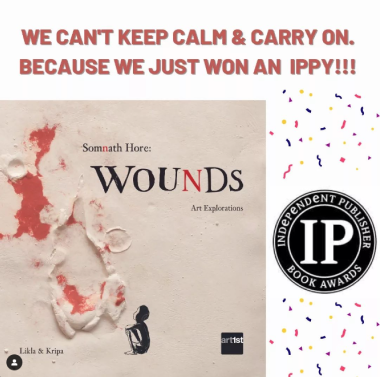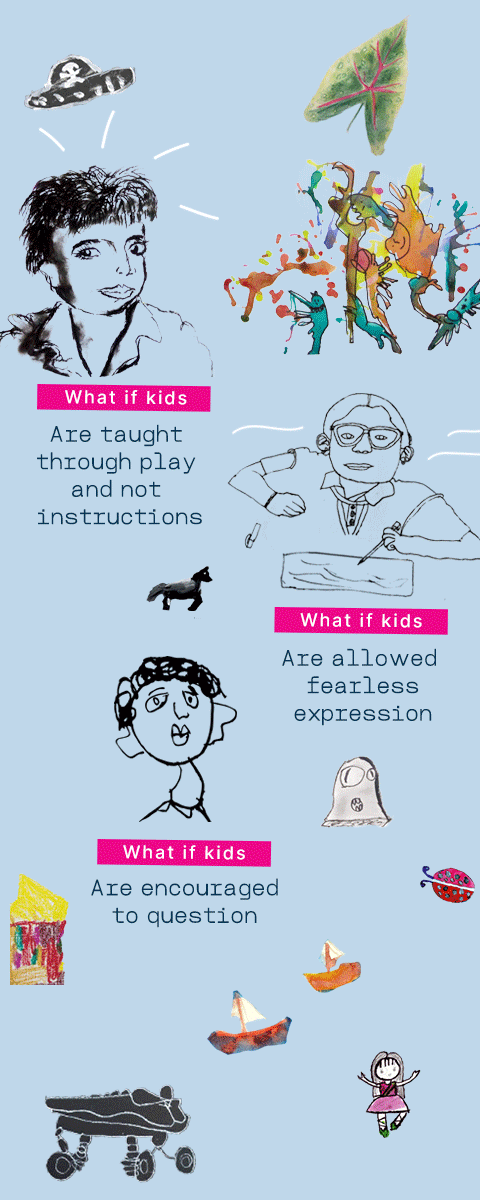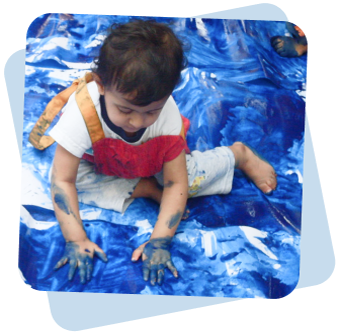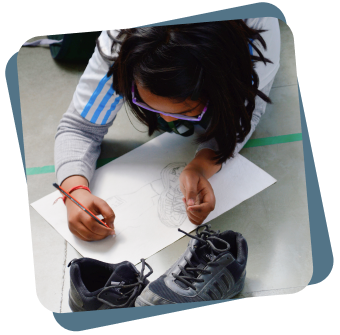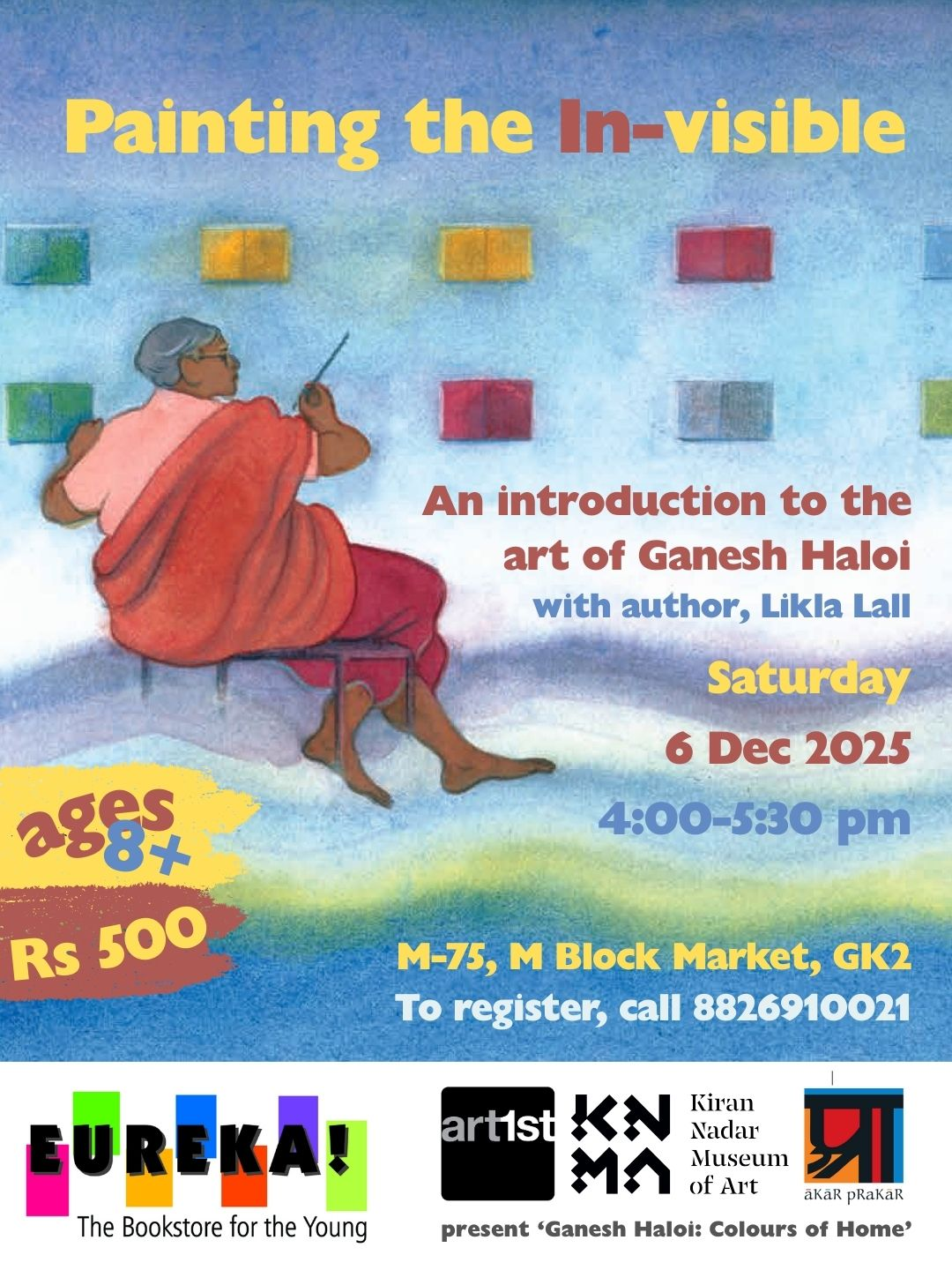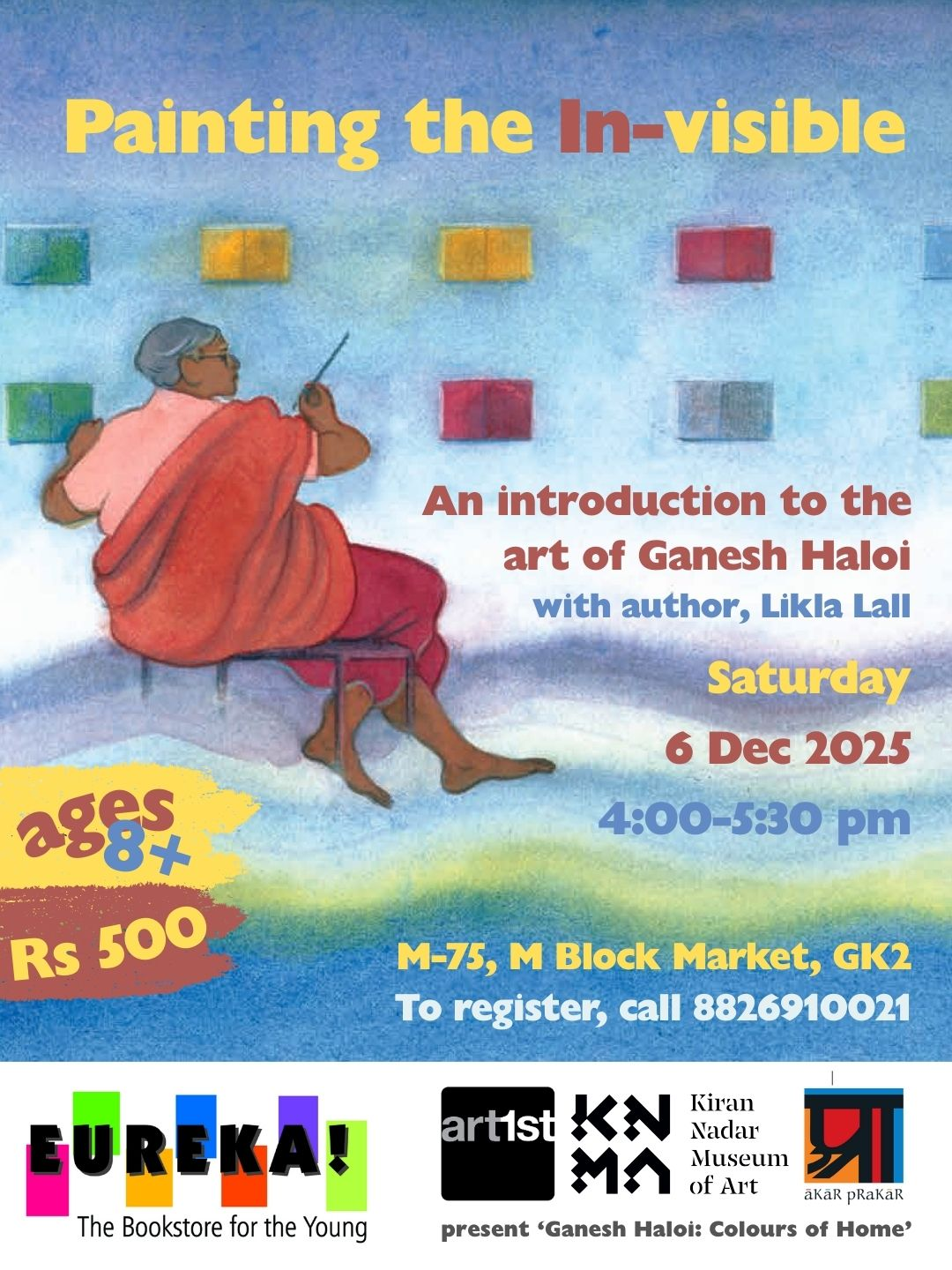
“We hope to continue this project in its second year as well so that we can build stronger relationships with the local residents of Sector 8 and inculcate the idea of taking on responsibility towards the neighbourhood and the environment amongst our students, all through the medium of Art.”
– an Akshara educator

Years of engagement 3 years
Grades 1-5
Located in Charkop, Sector 8, a low income locality in Kandivali West, Mumbai, Akshara High School raised the bar with its year-end curation project. Engaging the local community, it saw an exhilarating exhibition of student works displayed in the lanes and bylanes of Charkop, in the barber’s shop and outside people’s houses.
The curatorial theme was a declaration: ‘We are at Sector 8’.
An Annual Integrated Art Education Project, it was designed to integrate and connect academics, art and the neighbourhood. What worked was envisioning the project right at the start of the year. Thereon, all art projects through the year were integrated with the ecology and culture of Sector 8. What also went a long way was support from the school administration, highly motivated teachers and enthused children.
To plan the curation, the Art1st mentors and Akshara teachers conducted field visits around the school; brainstorming over project ideas that could be meaningfully integrated with each site. Sites for student field trips were shortlisted from these, based on feasibility, safety, ease of drawing and documentation.
Akshara stands next to a rich expanse of Mumbai’s mangroves; with unique and undiscovered flora and fauna. During the day, the narrow by-lanes in the school’s immediate vicinity are dotted with shops, carts, as well as motorbikes converted into mobile stalls, selling daily supplies. At night, these streets turn into a bustling bazaar offering an assortment of sweets and snacks.
With a site-specific exploration of concepts, the students were able to actively engage with the culture of the community, and build a relationship with their natural surroundings.
The project underlined the wide scope Art1st curriculum has of localisation and contextualization. For example: For the Grade 5 project “Let’s face it”, students were taken for a field trip in the by-lane of the school, to interact with the vendors they frequented every day. Children then requested to photograph them and drew their portraits. In the curated show, these portraits were displayed within school premises, and the shop vendors invited to visit with their families.
The project gave space for bringing in personal experiences and interests to shape a dynamic learning environment. For example, one of the student's parents initiated a Sunday Lake Cleaning Project, inviting his peers for it. This resulted in a field visit to the lake. The children sketched the landscape, capturing its many facets, highlighting the impact the water body had on the surrounding area.
The administration gave teachers the freedom to design their classes. The collaborative learning and teaching environment was conducive to innovate effective teaching methods. For instance, in a mural exercise on The Past, Present and Future of Charkop, the history teacher and the senior-most teacher of the school collaborated with the art teacher. An engaging discussion ensued on how Sector 8 was a few years ago, how it is now, and how it should be. After bulleting the same on the blackboard, the students were divided into three groups to illustrate the different themes in black and white murals.
The final curation saw a hands-on exploration for display strategies, with mock display of samples, identifying sites that required permissions before display, as well as employing strategies such as curatorial walk-through, if the display sites were far apart. The artworks included portraits of the residents and regulars of Charkop, drawings of their homes, surroundings, environment and belongings; binding them into an indelible relationship with Akshara.

